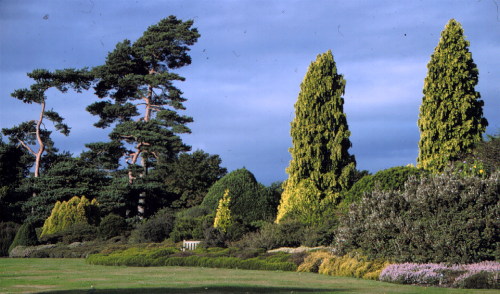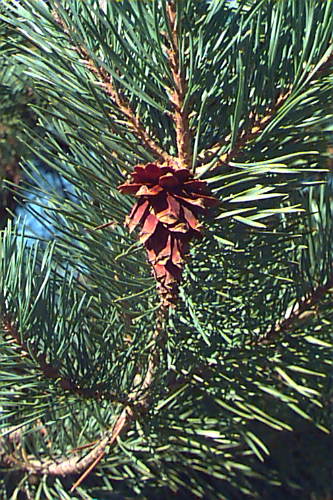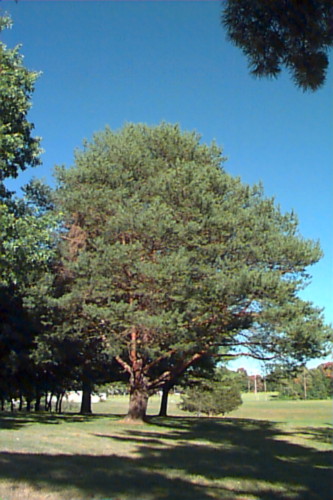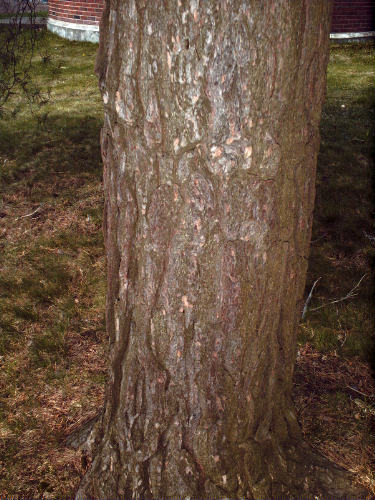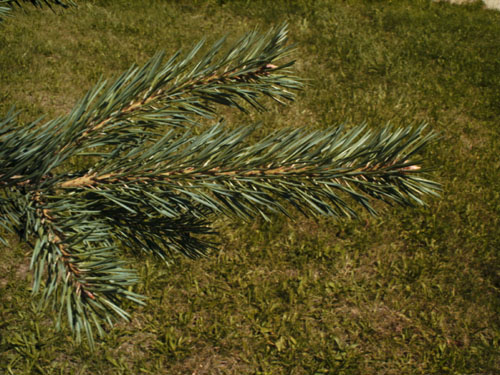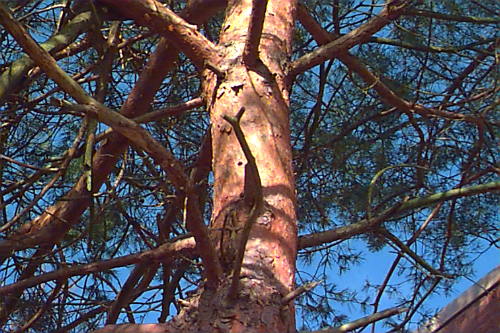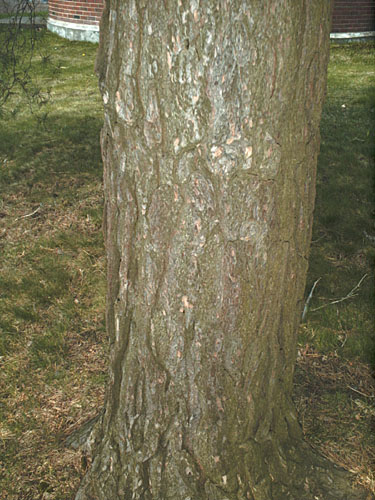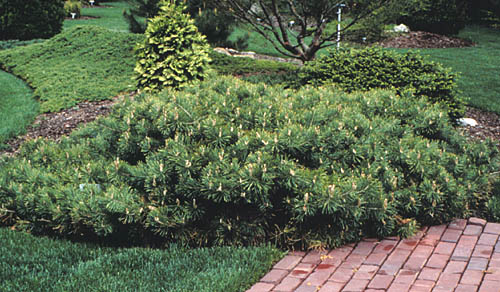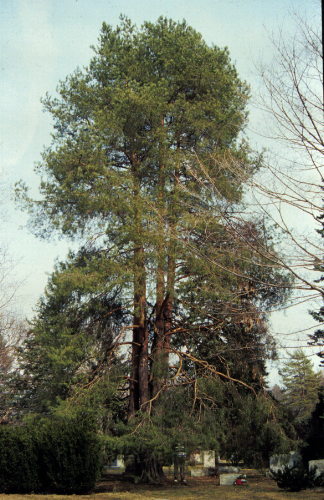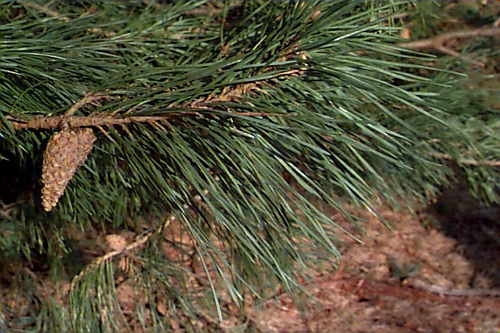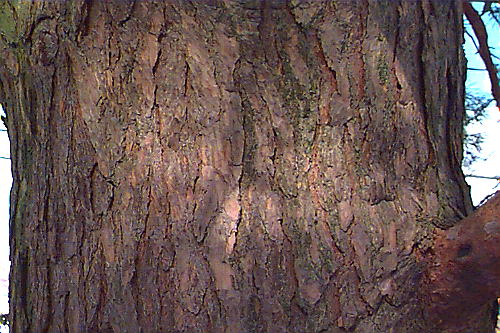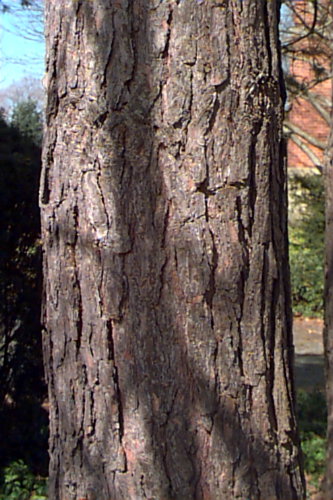Pinus sylvestris
Scotch Pine
Pinaceae
ExpandHabitat
- native to the Europe, from Norway to Spain, and to parts of Asia
- cold hardy to zone 2
Habit and Form
- evergreen tree
- in youth has a conical shape, becoming a flat-topped, spreading tree with age
- can be very attractive when mature
- 30' to 50' tall, with an almost equal spread
- horizontal branching habit
- medium texture
- medium growth rate
Summer Foliage
- stiff, serrated, green to blue-green needles
- 2 needles per fasicle
- needles have a 360 degree twist
- needles vary greatly in length, 1.5 to 4" long
Autumn Foliage
- no fall color (evergreen)
- foliage on some trees develops a yellow cast
- needles persist 3 years
Flowers
- monoecious
- no ornamental value
Fruit
- dull brown cone, 1" to 3" long
- small, fat conical
- held alone or in clusters of 2 or 3
- cones fall from tree at maturity
Bark
- gray-brown, but peels to show a red-orange color
- red-orange color is especially striking on the upper trunk and branches
- new stems are green and change to brown
- bark peels in thin scales giving a shredded appearance
Culture
- prefers a well-drained, acidic soil
- wind resistant
- transplants easily
- full sun
- very tolerant of infertile and dry soils
Landscape Uses
- attractive specimen, good accent plant
- possible choice for difficult sites
- often used as a Christmas tree
- excellent in floral arrangements
- effective in mass
- effective screen when young
- useful for bark color
- shade tree
Liabilities
- needles are sharp to the touch
- considerable genetic variation in needle color and plant vigor due to large geographic range
- some trees are weak growers and have yellow-green needle color
- can get Diplodia Needle Cast disease
- pine needle scale
ID Features
- needles have a 360 degree twist
- bark peels to reveal a reddish color at the top of the tree
- 2 needles per fasicle
- needles have a blue-green appearance
- needles sharp-pointed
Propagation
- seeds germinate very easily, no additional treatments required
Cultivars/Varieties
'Aurea' - The light green needles of this slow-growing tree turn bright yellow in winter, adding color to a bleak landscape.
'Beauvronensis' - An old cultivar, this plant reliably produces a compact, dense mound of needles. It is slow-growing and very broad in habit.
'Fastigiata' (also listed as f. fastigiata) - This is a strictly columnar form that may reach 25' tall and only a few feet wide. It is among the most fastigiate conifers available, but has a tendency to break up under winter ice and snow loads. It may benefit from being tied together. The needles are blue-green. 'Spaan's Fastigiate' is a slower-growing fastigiate form that is less susceptible to breaking up under snow and ice.
'Hillside Creeper' - A groundcover form, this plant grows vigorously to form an undulating carpet of medium green needles. 'Albyn Prostrata' is a similar form with thick, shiny green needles.
'Pumila' - Forming a large upright shrub with a broadly rounded habit, this selection is useful as a hedge or focal point. The needles are blue-green.
'Watereri' - This is a popular cultivar that typically reaches about 10' tall with a dense pyramidal growth habit. The needles are a steely blue color.
